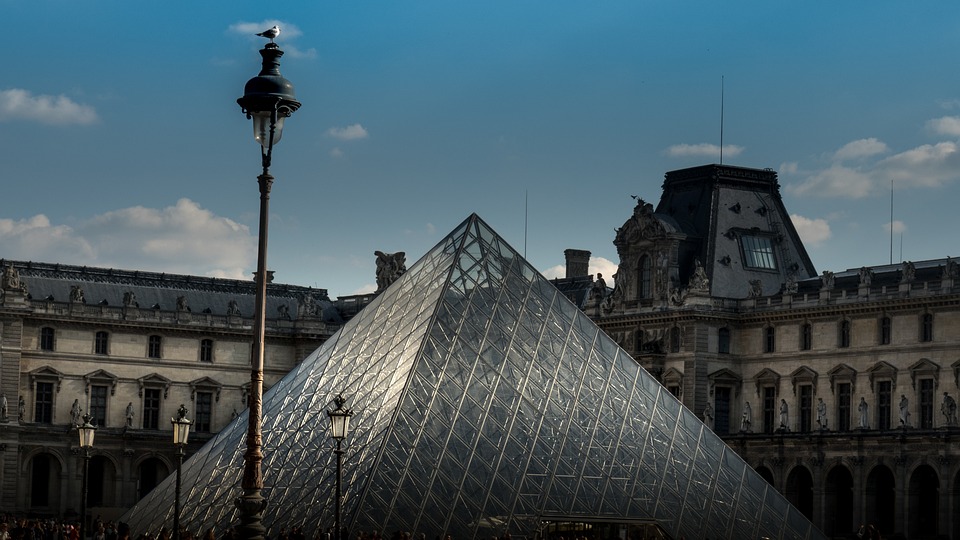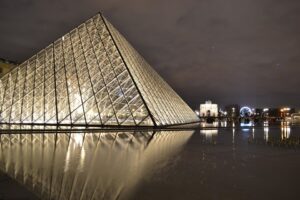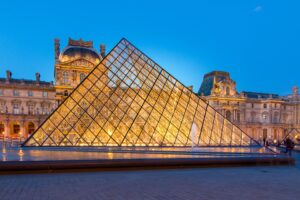Exploring the Timeless Beauty: A Guide to the Louvre Museum’s Must-See Masterpieces
The Louvre Museum in Paris stands as a testament to the artistic heritage of human civilization, embodying centuries of history and culture with its vast collection of art and antiquities. Once a royal palace, the Louvre has evolved into the world’s largest museum, inviting millions of visitors each year to explore its sprawling galleries, which house approximately 38,000 objects from prehistory to the 21st century. Among these treasures are a multitude of masterpieces that captivate the imagination and exemplify timeless beauty. This guide serves as an exploration of some of the Louvre’s must-see masterpieces, each a beacon of human creativity and historical significance.
1. Mona Lisa by Leonardo da Vinci
No visit to the Louvre would be complete without seeing the enigmatic Mona Lisa. Painted by Leonardo da Vinci in the early 16th century, this portrait of Lisa Gherardini, the wife of a Florentine merchant, is celebrated for its captivatingly serene expression and the mysterious allure of its subject’s smile. The painting’s mastery lies in Leonardo’s use of sfumato, a technique that creates a soft transition between colors and tones, lending the portrait its lifelike quality. The Mona Lisa remains one of the world’s most famous works of art, drawing millions of art enthusiasts who seek to decipher its mystique.
2. The Winged Victory of Samothrace
The Winged Victory of Samothrace is a breathtaking Hellenistic sculpture that dates back to the 2nd century BC. This masterpiece represents Nike, the Greek goddess of victory, and is renowned for its dynamic composition and the impression of movement it conveys, despite its considerable age. Discovered in 1863 on the island of Samothrace, this marble sculpture stands proudly at the top of the Daru staircase, giving the impression that it has just descended from the heavens. The forward thrust of the body, the wind-swept drapery, and the poised positioning of the wings evoke both action and grace, embodying the artistic ingenuity of the era.
3. The Venus de Milo
The Venus de Milo is another masterpiece of ancient Greek sculpture that captures the finesse of classical art. Thought to depict Aphrodite, the Greek goddess of love and beauty, this statue stands over two meters tall and is remarkable for its delicate modeling and the elegance of its proportions. Missing her arms, the Venus de Milo hints at a lost narrative, inviting viewers to speculate on the original pose and activity of the statue. Despite its incomplete state, the sculpture exerts a timeless beauty, symbolizing the ideal of feminine grace and serenity.
4. Liberty Leading the People by Eugène Delacroix
Eugène Delacroix’s Liberty Leading the People is an iconic painting that commemorates the July Revolution of 1830 in France. Delacroix presents an allegorical figure of Liberty, personified as a robust woman bearing the tricolor flag of the French Republic, leading a varied cast of followers from diverse social backgrounds across a barricade. The canvas pulsates with energy, capturing the fervor of revolutionary zeal and the spirit of freedom. Rich in symbolism and vivid detail, this painting stands as a powerful testament to the enduring fight for liberty and justice.
5. The Coronation of Napoleon by Jacques-Louis David
The Coronation of Napoleon is a grandiose depiction of the self-coronation of Napoleon Bonaparte in Notre-Dame Cathedral in 1804. Painted by Jacques-Louis David, the official court painter of the empire, this monumental work is remarkable for its meticulous attention to detail and its dramatic representation of power. David captures the moment when Napoleon, crowned as Emperor of the French, crowns his wife Josephine as Empress. The painting illustrates a pivotal moment in history with accuracy and grandeur, immortalizing Napoleon’s ambition and legacy.
6. The Raft of the Medusa by Théodore Géricault
One of the most dramatic works in the Louvre, The Raft of the Medusa by Théodore Géricault is a harrowing depiction of a real-life shipwreck that occurred in 1816. The painting details the desperate struggle for survival faced by the victims of the shipwreck, adrift on a raft for days. Géricault’s masterful use of light and shadow enhances the emotional intensity of the scene, capturing the despair and hope of the men on the raft. This monumental canvas is not only an artistic masterpiece but also a powerful commentary on human suffering and resilience.
7. The Lacemaker by Johannes Vermeer
Johannes Vermeer’s The Lacemaker, a diminutive yet exquisite work, showcases the Dutch artist’s unparalleled skill in depicting domestic life. The painting focuses on a young woman concentrated on her delicate task of lace-making, a scene rendered with incredible precision and attention to detail. Vermeer’s use of light and color brings out the intricacy of the lace and the quiet ambiance of the scene, solidifying his reputation as a master of genre painting.
8. The Oath of the Horatii by Jacques-Louis David
The Oath of the Horatii is another masterwork by Jacques-Louis David, which embodies the neoclassical ideals of loyalty, patriotism, and sacrifice. The painting portrays the solemn moment when three brothers vow to defend their city, facing their father who stands with outstretched arms. The bold use of symmetry, the clarity of form, and the dramatic interplay of light and shadow reflect the influence of classical art, while also imbuing the work with a timeless moral message.
Conclusion
The Louvre Museum is an unparalleled repository of human achievement, where each artwork tells a story not just of its time, but of timeless human experiences, emotions, and aspirations. From the quiet allure of the Mona Lisa to the dynamic prowess of the Winged Victory of Samothrace, each masterpiece encapsulates the quintessence of artistic expression. Exploring these treasures allows us to delve into the depths of history, experiencing firsthand the beauty and innovation that continue to inspire and captivate across generations. A visit to the Louvre is not merely a tour but an immersive experience in the world’s greatest artistic traditions—a journey that reveals the profound interconnectedness of art and humanity.




